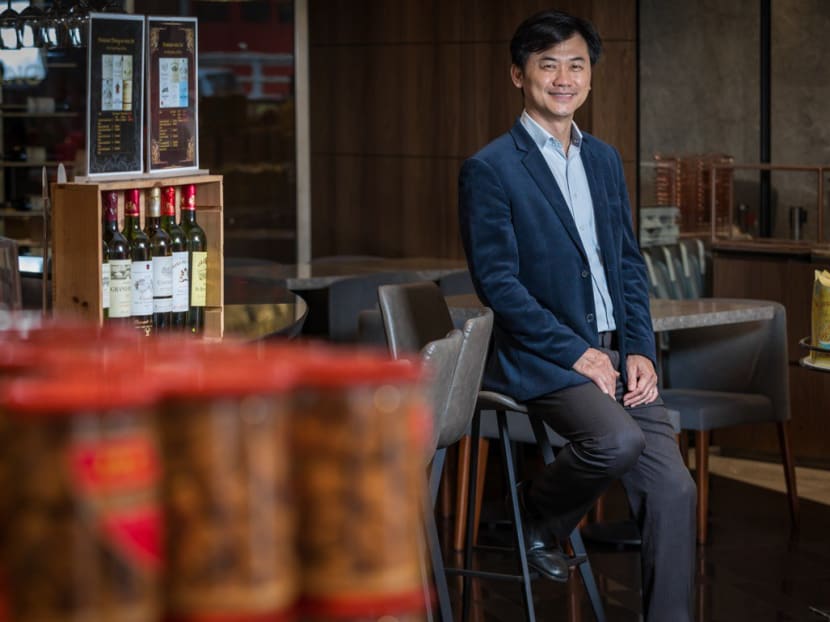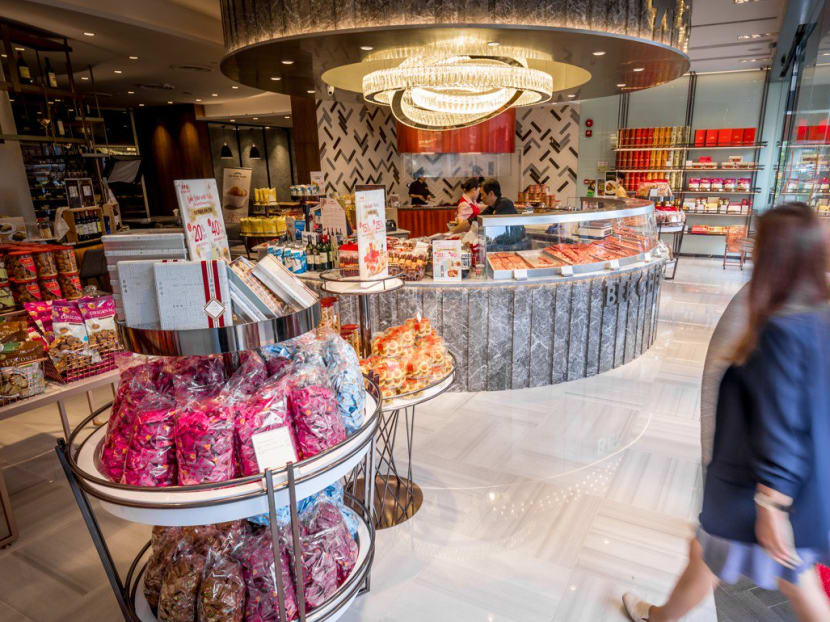How Bee Cheng Hiang grew from a one-man street stall into an Asian powerhouse
SINGAPORE — For many families throughout Asia, Chinese New Year would not be complete without a few servings of barbecued preserved pork.
SINGAPORE — For many families throughout Asia, Chinese New Year would not be complete without a few servings of barbecued preserved pork.
A snack that is particularly popular in southern China and Southeast Asia, these flat slices of sweet, barbecued meat are called yuk gon in Cantonese and rou gan in Mandarin, but they’re best known as bak kwa, which comes from the southern Chinese dialect of Hokkien.
Arguably the best-known bak kwa brand is Singapore’s Bee Cheng Hiang, which traces its history back to 1933.
Founder Teo Swee Ee literally established the brand on his back: he would shoulder a bamboo pole holding two baskets around Singapore, one basket containing a charcoal grill and the other full of freshly cooked bak kwa.

Teo would set up his grill outside public entertainment venues, such as open-air opera sheds, where his barbecued meats sold well, especially during festive occasions. He eventually made enough money to open a store on Rochor Road, near the mouth of the Singapore River, in 1945 and later opened a second shop nearby on Victoria Street.
Unfortunately, Victoria Street was a popular parking spot for trucks, which hid Teo’s store from potential customers. So the enterprising Teo came up with a solution that worked even better than expected: he paid the owner of the fleet to let him paint his company name and logo on the trucks.
This not only made his Victoria Street store visible once again, but also made his brand prominent all over Singapore in a time before mobile advertising was common. After seeing Teo’s eye-catching logo across the length and breadth of the island, Singaporeans came to believe that Bee Cheng Hiang — then still known in English as Bee Chun Heng — was a large and prestigious company, and increased the cachet of his brand.

Teo was a superstitious man, and selected the characters for his company – which translate as “beautiful”, “precious” and “fragrant” – because they each contain nine strokes, with the number nine symbolising longevity to the Chinese. On top of that he was a talented calligrapher, painting Bee Cheng Hiang’s logo himself.
Today, Bee Cheng Hiang’s operations are overseen by Teo’s great nephew, Mr Daniel Wong, who serves as group general manager, and the company operates 376 outlets in 12 countries and regions. More than 200 of them are in mainland China, but its bak kwa is also popular in Hong Kong, Malaysia, Indonesia, the Philippines and South Korea.
Based on an ancient technique for preserving and drying pork, bak kwa uses expensive cuts of premium pork (and these days also chicken and beef) and is priced accordingly.
Most Chinese recipes thicken this festive treat using soy additives, but Bee Cheng Hiang’s bak kwa is made solely from pork and marinades. Each store grills its own bak kwa, while the products sold online and for distribution are made in a facility in Senoko, on the northernmost tip of Singapore.
While many food businesses have mechanised and automated their processes, Mr Wong has insisted that Bee Cheng Hiang’s bak kwa should still be spread by hand on traditional bamboo sieves and roasted manually.
“I believe in only mechanising processes that can be done better by machines,” Mr Wong says. “I will not compromise quality in processes where the human touch makes a difference.”

Tiny Singapore has very few farms, so its food businesses rely on the city state’s Agri-Food and Veterinary Authority (AVA) to import supplies from overseas.
“The AVA looks for healthy farms with hygienic abattoirs, which are these days attached to cutting plants that also have to be inspected and certified as hygienic,” Mr Wong says.
Bee Cheng Hiang buys premium pork from various sources, with different flavours and textures, so the company must adjust its processes to ensure its product is consistent.
“Twenty years ago, Western farmers looked at yield as how much lean meat they could produce, but paradigms have now shifted and farmers realise that the market values taste above low fat content,” he reveals.
Bee Cheng Hiang prides itself on using no artificial colouring, flavouring, preservatives, tenderisers or MSG. The key to creating juicy bak kwa, despite the high temperatures involved, is a family secret shared with very few outsiders.
Before new Bee Cheng Hiang chefs are taught the recipe, Mr Wong says they are told by trainers to “imagine that you are cooking for your mother, wife or girlfriend … This helps them cook with their hearts, which is essential to maintaining consistency and quality.”
Many copycats have unsuccessfully tried to replicate Bee Cheng Hiang’s bak kwa — Mr Wong believes that the perfect sample is tender and juicy with a thin, crisp burnt layer on the surface — and have even adopted monikers similar to Bee Cheng Hiang’s. “But we aren’t worried about imitators because we aren’t standing still,” he says.
Read also
The company places great importance on research and development by its team of food scientists. “They develop hundreds of new products every year, but only about 10 per cent make it to the shelves. In a good year, that would translate to around 20 new products,” Mr Wong says.
“The entire process, from brainstorming to final approval, is very long and tedious, comprising many elements, but all this work boils down to the actual consumer either liking or disliking the item after tasting it.”
The brand has also continually evolved its proverbial bread and butter.
“Bak kwa is a bit clumsy,” Mr Wong says, referring to how the oily snack can make a mess and lose its shape.
So in the early 2000s, the company revealed vacuum-packed, bite-sized bak kwa snacks, which Mr Wong calls a “second-generation product” aimed at students and working adults who wanted to enjoy the meats at school or work.
Then in December 2017, the brand released a now-popular pork floss that had been baked into crispy shapes and wrapped candy-style in small wrappers.
“Pork floss is messy, too, but our food scientists managed to produce it in this defined cookie shape — crispy and not too dry, but containing no preservatives,” Mr Wong says of this “third-generation” flagship food item.
Read also
All of the modern creations and the classic bak kwa can be tasted at the company’s new flagship grillery at 1359 Serangoon Road.
Mr Wong reveals that after he was asked at a wedding banquet about what wines could be paired with bak kwa, he was inspired to embark on an unprecedented venture that took years to realise.
“This is where we share and let customers experience what our brand is all about,” he says of the Bee Cheng Hiang Grillery, where customers can pair bak kwa with Grand Cru and Bordeaux wines. “Here, we only serve our favourite wines.”

The grillery, which showcases the full range of Bee Cheng Hiang products, is the only branch that roasts its bak kwa over a charcoal grill. Other outlets cook the meat over a fire or electric grill.
The company employs more than 3,000 people worldwide. The descendants of Teo Swee Ee regularly hold staff-appreciation activities and all company heads have worked with the company for at least 15 years. Its longest-serving employees recently notched up 30 years with the company.
“We don’t budget for each department annually or hold ourselves to lofty growth targets,” Mr Wong says
“We just aim to open two to three more stores in each of our territories each year. Our focus is still on quality. Technology has raised customers’ expectations of quality and response time, so unless a brand delivers in both respects, it is likely to face a backlash on social media.” SOUTH CHINA MORNING POST










